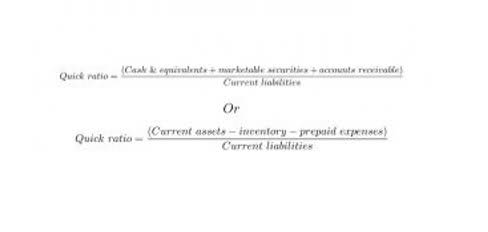
The balance sheet includes information about a company’s assets and liabilities. Depending on the company, this might include short-term assets, such as cash and accounts receivable, or long-term assets such as property, plant, and equipment (PP&E). Likewise, its liabilities may include short-term obligations such as accounts payable and wages payable, or long-term liabilities such as bank loans and other debt obligations. This balance sheet template provides you with a foundation to build your own company’s financial statement showing the total assets, liabilities, and shareholders’ equity. A company’s balance sheet is one of three financial statements used to give a detailed picture of the health of a business. Investors and analysts will read the balance sheet alongside the income statement and cash flow statement, to evaluate the company’s overall financial position.
It will give you an idea of how efficient the company is and whether they are making a profit. Using the sample above, we can look at some transactions that may change only the balance sheet figures. After enrolling in a program, you may request a withdrawal with refund (minus a $100 nonrefundable enrollment fee) up until 24 hours after the start of your program. Please review the Program Policies page for more details on refunds and deferrals.
Why Is a Balance Sheet Important?
The balance reflected by a balance sheet is equity—which is assets minus liabilities. Knowing your equity will give you an idea of how your business is doing and how much it is worth. Subtract liabilities from assets to determine your business’s equity.
The digitally financial templates are varying from form to firm many firms use the American template and many use the British template. We accept payments via credit card, wire transfer, Western Union, and (when available) bank loan. Some candidates may qualify for scholarships or financial aid, which will be credited against the Program Fee once eligibility is determined. Please refer to the Payment & Financial Aid page for further information. As with assets, these should be both subtotaled and then totaled together.
Simple Balance Sheet Example
This statement is a great way to analyze a company’s financial position. An analyst can generally use the balance sheet to calculate a lot of financial ratios that help determine how well a company is performing, how liquid or solvent a company is, and how efficient it is. As such, the balance sheet is divided into two sides (or sections). The left side of the balance sheet outlines all of a company’s assets. On the right side, the balance sheet outlines the company’s liabilities and shareholders’ equity.
- In includes the owner’s investment(s) and retained earnings (the portion of the profits reinvested in the business).
- The balance sheet example from FreshBooks makes calculating your business equity simple.
- If this balance sheet were from a US company, it would adhere to Generally Accepted Accounting Principles (GAAP).
- The most liquid of all assets, cash, appears on the first line of the balance sheet.
- Making sure that your margin and cash accounts are in order are an important step to fulfil before approaching investors.
- Lastly, you can compare your total to the one listed on your company’s general ledger to ensure there are no discrepancies.
It is also a valuable tool for management to know the value of assets a business owns, including equipment, bank balance and what it owes at any given time. Depicting your total assets, liabilities, and net worth, this document offers a quick look into your financial health and can help inform lenders, investors, or stakeholders about your business. Based on its results, it can also provide you key insights to make important financial decisions. Balance sheets allow the user to get an at-a-glance view of the assets and liabilities of the company. Employees usually prefer knowing their jobs are secure and that the company they are working for is in good health.
Blank Balance Sheet Template
Current liabilities are due within one year and are listed in order of their due date. Long-term liabilities, on the other hand, are due at any point after one year. More convenient than cash and checks — money is deducted right from your business checking account.
Preparing and filing an annual return in the BVI: What companies need to know – Vistra
Preparing and filing an annual return in the BVI: What companies need to know.
Posted: Wed, 13 Dec 2023 08:00:00 GMT [source]
Updates to your application and enrollment status will be shown on your account page. We confirm enrollment eligibility within one week of your application. HBS Online does not use race, gender, ethnicity, or any protected class as criterion for admissions for any HBS Online program. Our easy online application is free, and no special documentation is required.
